The 4000-series Integrated Circuits (IC) is a classic series of CMOS chips. It has a bunch of useful basic features such as logic gates, 7-segment decoders, counters, and more. These are great building blocks for digital electronics. This series is an alternative to the 7400 series which has a lot of the same functionality.
Below you’ll find a list of the most common 4000-series chips.
Click on the IC number of a chip to learn more about its pins, functions, and example circuits. Also, check out the 1983 RCA databook for more info about missing chips below.
More ICs will be added. If you have a request, let me know in the comments!
| IC # | Pinout | Description |
|---|---|---|
| 4001 | 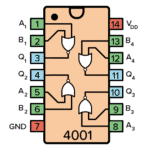 | Quad 2-input NOR gate: An IC with four standard NOR gates. |
| 4008 | 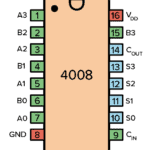 | 4-bit Binary Full Adder: An IC for adding two 4-bit binary numbers. |
| 4011 | 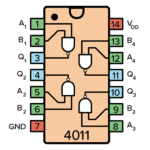 | Quad 2-input NAND gate: An IC with four standard NAND gates. |
| 4013 | 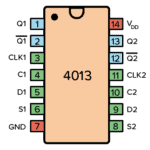 | Dual D-type flip-flop: An IC with two D Flip-Flops. |
| 4014 | 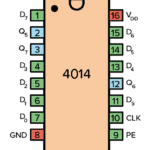 | 8-stage parallel-in shift register: An 8-bit shift-register with parallel inputs. Great for creating a parallel-to-serial converter. |
| 4015 | 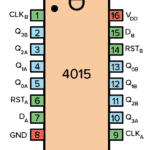 | Dual 4-bit static shift register: This chip contains two 4-bit shift registers with serial input and parallel output pins. Great for adding more output pins to a microcontroller or Arduino. |
| 4016 | 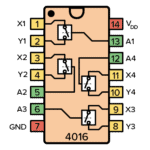 | Quad bilateral switch: An IC with four bidirectional, analog switches which can be controlled individually using a control pin. The signal can flow in either direction between the two pins of each switch. |
| 4017 | 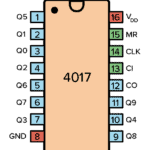 | 5-stage Johnson Decade Counter: A decade counter with ten outputs. Each output represents a number, 0 to 9, and goes HIGH when the counter reaches it. |
| 4023 | 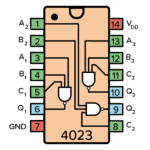 | Triple 3-input NAND gate: An IC with three 3-input NAND gates. |
| 4025 | 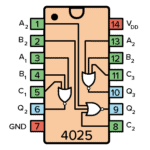 | Triple 3-input NOR gate: An IC with three 3-input NOR gates. |
| 4030 | 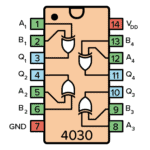 | Quad 2-input XOR gate: An IC with four standard XOR gates. |
| 4049 | 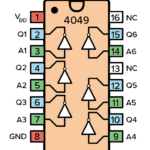 | Hex Inverting Buffer and Converter: An IC with six inverters with high sink current that can be used for high-to-low level shifting. |
| 4050 | 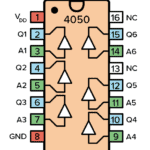 | Hex Buffer and Converter: An IC with six buffers with high sink current that can be used for high-to-low level shifting. |
| 4060 | 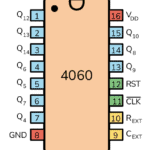 | 14-stage ripple-carry binary counter/divider and oscillator: A binary counter with oscillator integrated. Add two resistors and a capacitor to create various time delays or frequencies. |
| 4069 | 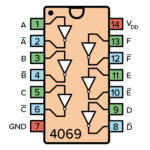 | Hex Inverter: An IC with six inverters/NOT gates. It's often used for pulse-shaping, high-input impedance amplifiers, oscillators, or logic circuits. |
| 4070 | 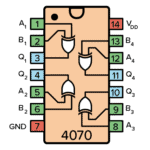 | Quad 2-input XOR gate: An IC with four standard XOR gates. |
| 4071 | 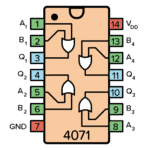 | Quad 2-input OR gate: An IC with four standard OR gates. |
| 4073 | 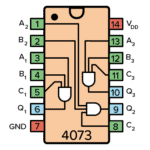 | Triple 3-input AND gate: An IC with three 3-input AND gates. |
| 4075 | 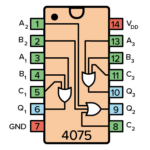 | Triple 3-input OR gate: An IC with three 3-input OR gates. |
| 4077 | 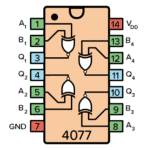 | Quad 2-input XNOR gate: An IC with four standard XNOR gates. |
| 4081 | 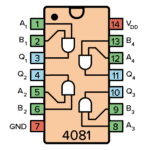 | Quad 2-input AND gate: An IC with four standard AND gates. |
| 4093 | 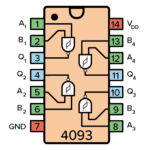 | Quad 2-input NAND Schmitt Trigger gate: An IC with four Schmitt Trigger NAND gates. |
| 4510 | 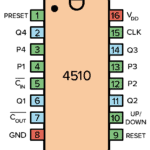 | Up/Down BCD Counter With Preset Function: This is a BCD counter that can count up or down between 0 and 9. |
| 4511 | 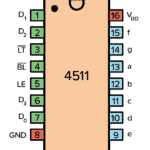 | BCD to 7-segment latch/decoder/driver: A BCD to 7-segment decoder. This IC converts binary-coded decimals to a seven-segment display. |
| 40106 | 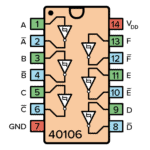 | Hex Schmitt-Trigger Inverter: An IC with six Schmitt Trigger inverters that can be used to create oscillators for blinking LEDs, creating sound, and much more. |
Thanks to Inductiveload who made the pinout drawings that I used as the starting point for the pinouts on this page. Check out the 4000 Series Overview on Wikimedia for their original work.
Good to know about the 4000 series:
- The output pins usually only support a few milliamps of sink or source current.
- Lots of manufacturers have made these throughout time, so you’ll usually find the chip number with a prefix such as CD4xxx, HEF4xxx, or NTE4xxx.
- All unused inputs might consume current (even for unused gates), so connect them all to either GND or VCC if you want to avoid unnecessary current consumption.
- Most chips support a voltage supply of between 3V and 15V. Some versions support up to 20V.
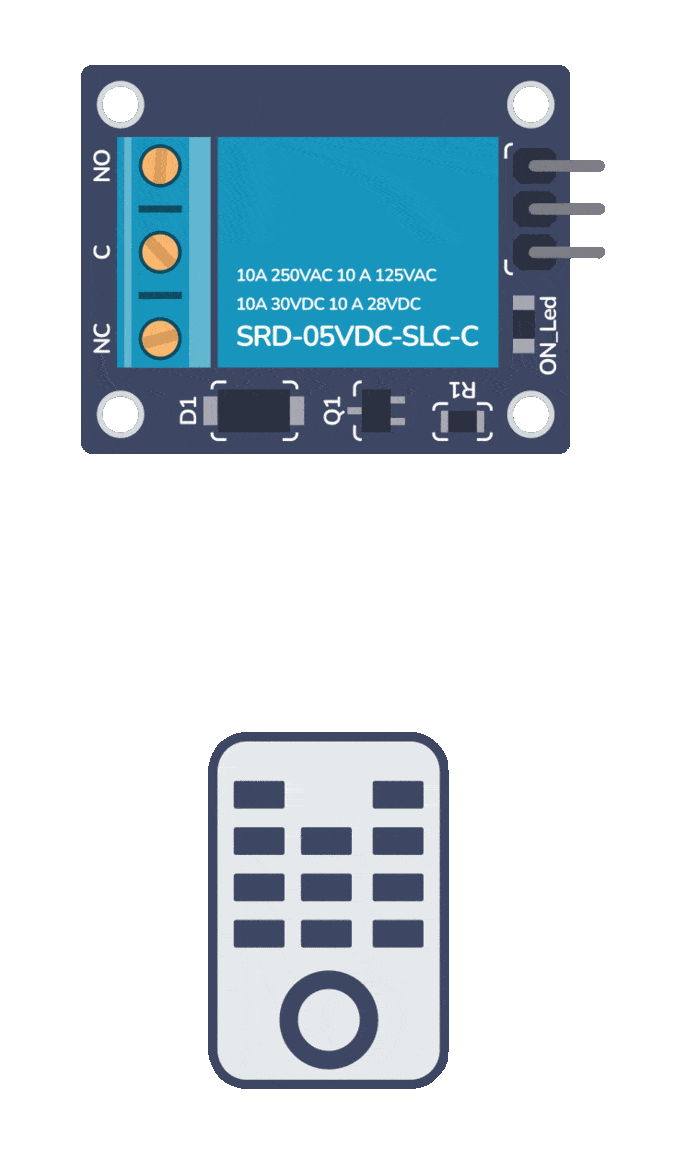
Build Something Useful This Evening
This gadget lets you use any IR remote-control to control your lamp, garden lights, heater oven, garage door, or anything else.
